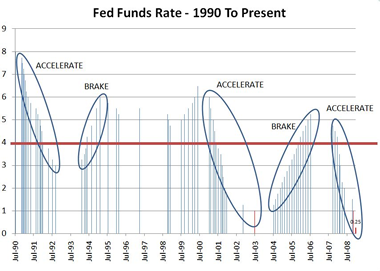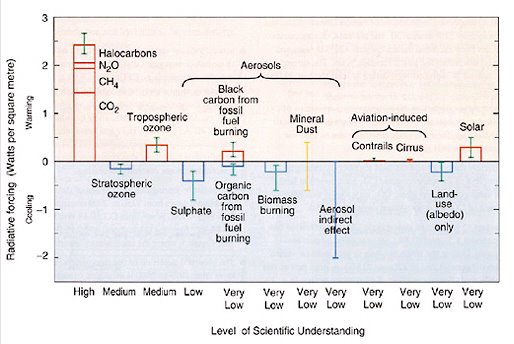Watching The Federal Reserve
SEARCH BLOG: FEDERAL RESERVE
Ever since the Federal Reserve realized that the economy was tanking [a couple years too late] and dropped interest rates that they had just finished raising to fight inflation [when dropping prices portended possible deflation], the Fed has been sitting quietly in the background doing banking "stuff" with banks that were have problems doing their banking "stuff."
The Fed has seen itself as the guardian of our banking system, whereas the rest of the nation has thought of it as the stabilizer of our economy. Not so much. As long as banks were solid, the Fed's whipsawing of our economy [which increased in frequency after 2000] was seen as a necessary action to prevent our economy from overheating or freezing.
It wasn't until the Fed's last series of interest rate hikes [on the erroneous fear of inflation] starting in 2004 exacerbated a developing financial crisis that people began to notice something amiss. With the housing market collapsing followed by energy prices crushing the economy, why was the Fed still focused on raising interest rates?
Certainly, interest rates were not high in absolute or historical terms, but they were increased so quickly that individuals and business were caught in a large relative increase in costs. Money borrowed on equity was subject to variable rates that followed the Fed's rates. Suddenly those home improvement loans because home wrecking loans. And small business owners that used their home equity for loans to increase their businesses found themselves in a cash flow crunch. The rush of loans being defaulted caught banks and the Fed by surprise. This was not supposed to happen just because of manipulations to protect banks against inflation.
In 2007, while the Fed funds rate was 5.25%, I thought that a quick, decisive cut to 4% might restore some confidence that the Fed was on top of the situation... with more cuts to follow as necessary. A few months later the Fed cut the rate to 4.75% which only triggered dismay. Another cut a month or so later to 4.25% was now too little too late. It triggered panic as people were convinced the Fed simply didn't understand the scope of the problem. From that point on, the Fed was in a canoe following the tidal wave of collapse. There was nothing it could do.
The best laid plans....
Now there are rumblings about possible Fed actions to raise the funds rates. Well, they are at 0% so it is difficult to lower them. The question is: when is it appropriate to return rates to a more "normal" level and how fast? The last part of the question is even more important than the first part. Given the huge value losses of real estate and investments, at what point do we say everything is "normal" again? When the DJIA reaches 10,000? When home foreclosures return to the average rate of the past 10 years? When unemployment falls below 6 percent?
That's the big question for the Fed: when and how fast should the economic brakes be applied? There is no more accelerator for the Fed to press, so all the Fed can do is apply the brakes. How much slower should the economy go from here?
Go to the very bottom of this column to read some excerpts from blog posts going back to the beginning of 2006. It explains much. You can also do a blog search on "Federal Reserve" using the search box at the top left.
..








